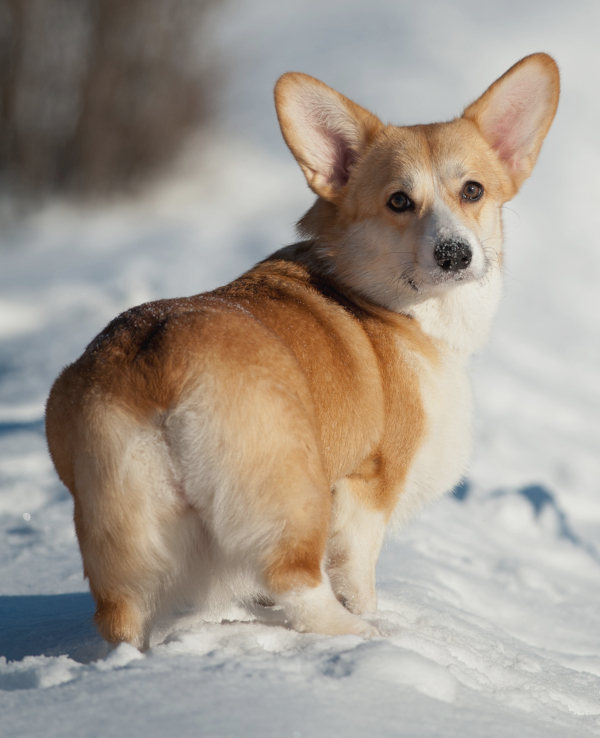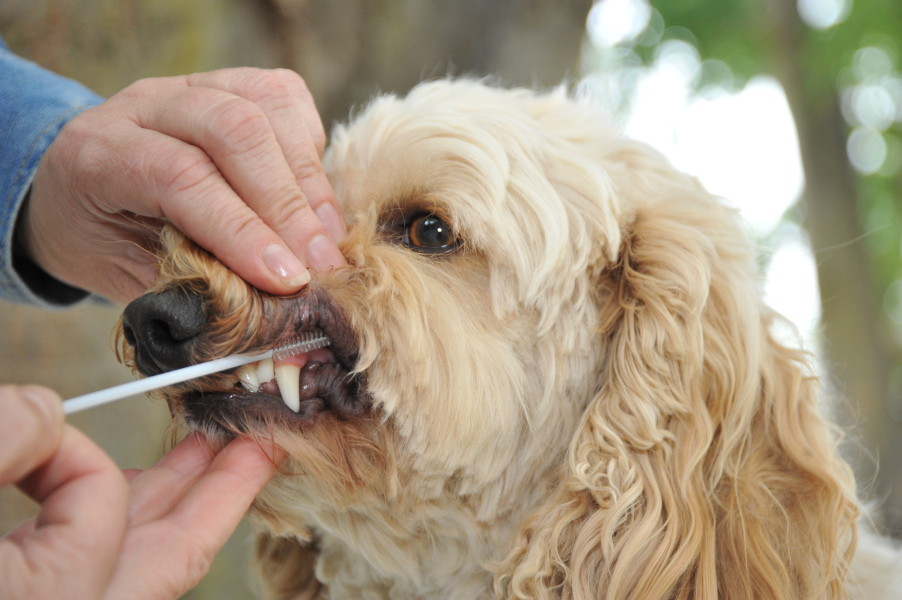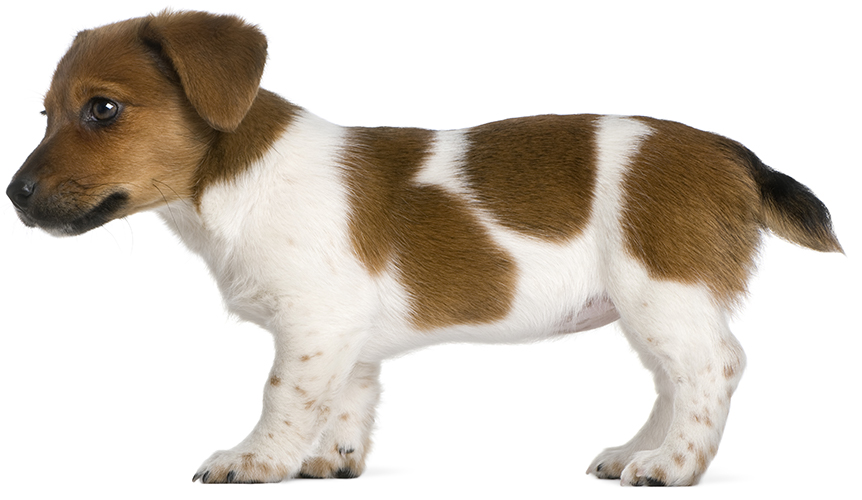Quick Summary

Click here for Price and Turnaround Time
Phenotype: Dogs with natural bobtail have naturally bobbed (shortened) tails. Length of the bobbed tail is variable; some individuals may have nearly full-length tails while others may have virtually no tail.
Mode of Inheritance: Autosomal dominant
Alleles: N = Normal (no natural bobtail), BT = Natural bobtail
Breeds appropriate for testing: Australian Cattle Dog, Australian Shepherd, Austrian Pinscher, Bourbonnais Pointer (Braque du Bourbonnais), Brazilian Terrier, Brittany Spaniel, Catahoula Leopard Dog, Croatian Sheepdog, Danish/Swedish Farmdog, Jack Russell Terrier, Karelian Bear Dog, McNab, Mudi, Pembroke Welsh Corgi, Polish Lowland Sheepdog, Pyrenean Shepherd, Savoy Sheepdog, Schipperke, Spanish Waterdog, Swedish Vallhund
Explanation of Results:
- Dogs with N/N genotype do not have this natural bobtail variant. They will most likely have normal length tails, though other genetic factors may affect tail length. They cannot transmit this natural bobtail variant to their offspring.
- Dogs with N/BT genotype are expected to have a natural bobtail. They may transmit this natural bobtail variant to 50% of their offspring. Matings between two N/BT dogs are expected to produce 50% puppies with natural bobtail, 25% puppies with normal length tails, and 25% puppies with the embryonic lethal BT/BT genotype (an expected 25% reduction in litter size).
- Dogs with BT/BT genotype are expected to terminate development in utero (embryonic lethal); this genotype is not expected to be seen in live dogs. If a BT/BT genotype puppy is born alive, it may display severe developmental defects, including spinal deformities, that are incompatible with life.
Sample Collection
Dog DNA tests are carried out using cells brushed from your dog's cheeks and gums. The preferred cytology brushes are sent to you by mail, or you may provide your own brushes. For accepted alternative brushes, click here
We recommend waiting until puppies are at least three weeks old before testing.

Step-By-Step:
- Make sure the dog has not had anything to eat or drink for at least 1 hour prior to collecting sample.
- When swabbing puppies, isolate each puppy from the mother, littermates and any shared toys for 1 hour prior to swabbing. Puppies should not have nursed or eaten for 1 hour prior to collecting sample.
- If collecting samples from more than one dog, make sure to sample one dog at a time and wash your hands before swabbing another dog.
- Label brush sleeve with name or ID of dog to be sampled.
- Open brush sleeve by arrow and remove one brush by its handle.
- Place bristle head between the dog’s gums and cheek and press lightly on the outside of the cheek while rubbing or rotating the brush back and forth for 15 seconds.
- Wave the brush in the air for 20 seconds to air dry.
- Insert brush back into sleeve.
- Repeat steps 5 - 8 for each unused brush in sleeve on a fresh area of cheek and gums. Make sure to use and return all brushes sent by the VGL. In most cases, it will be 3 brushes per dog. If using interdental gum brushes, please note that the VGL requires 4 brushes per dog and only moderate or wide interdental gum brushes are accepted.
- Do not seal brushes in sleeve.
- Place all samples in an envelope and return to the address provided.
ATTENTION:
- Do not collect saliva/drool – the key to obtaining a good sample is getting cheek cells on the swab
- Do not rub swab on the dog’s tongue or teeth – this will result in poor quality sample
- Do not collect a sample from a puppy that has recently nursed – the mother’s genetic material can rub off on the puppy’s mouth and contaminate the sample

Natural bobtail (NBT) is a naturally occurring mutation in the T-box transcription factor T gene that results in a shortened tail. The mutation, a single nucleotide variant (c.189C>G), is inherited in an autosomal dominant fashion with both sexes equally affected. This mode of inheritance means that the presence of one copy of the variant will produce the bobbed tail phenotype in males and females. The length of the bobbed tail is variable and under the influence of other as-yet-undetermined genetic factors that cause some NBT individuals to have nearly full-length tails while others may have virtually no tail.
While heterozygous individuals (N/BT genotype, possessing one normal and one affected T gene) have shortened tails, data suggest that the homozygous condition (BT/BT genotype, possessing two copies of the affected gene) is lethal in utero in most cases. Breeding of two heterozygotes (a N/BT x N/BT mating) is predicted to produce 25% N/N puppies with normal length tails, 50% N/BT puppies with natural bobtail, and 25% homozygous affected BT/BT offspring. Most BT/BT genotype offspring are predicted to terminate in utero and therefore represent a potential 25% reduction in litter size.
One report in the veterinary literature identified two tailless Pembroke Welsh Corgi puppies with BT/BT genotype that survived to term but displayed severe developmental abnormalities incompatible with life, including anorectal atresia and spinal defects. Both puppies were from the same parents but different litters, and neither survived long after birth. This small sample size and lack of further reports suggests that it is rare for BT/BT puppies to reach full term.
Genetic testing is recommended to verify and validate the natural bobtail status of dogs, especially if docking is allowed, and to help with breeding pair selection to decrease the risk of reduced litter size and lethal deformities. Testing for natural bobtail assists owners and breeders in identifying dogs that have this trait.
